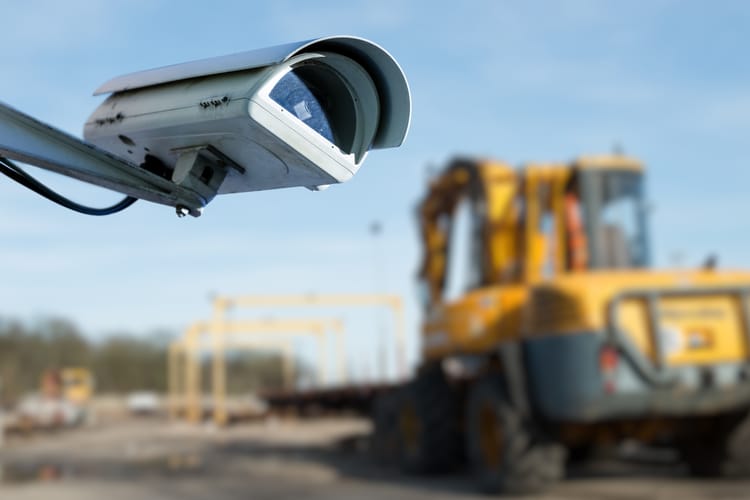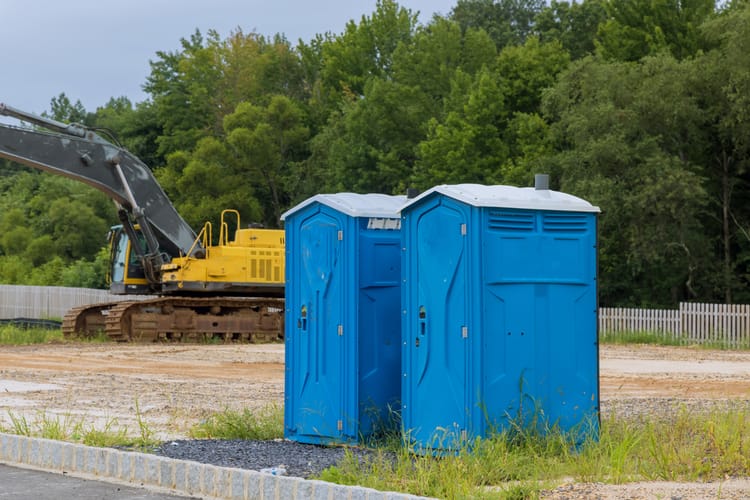Want to grow your firm? Train like you mean it

This week we’re talking money, materials and mandates. Construction starts are slowing, but not everywhere. Washington’s got contractors in its sights—again—with fresh sanctions, policy changes and a big bill that could reset the rules. Plus, why tech rollouts flop, and the one thing missing from most toolkits (hint: it’s not a wrench).
And if you need some tough love and inspiration to make $1M as a contractor, you'll want to check out the podcast featured in The Blueprint.

>> Buried treasure. A Swedish tunnel crew hit the jackpot: six shipwrecks, some dating back 700 years. One vessel from the 1500s was so intact it still had burn marks from when it caught fire. Talk about a hot find.
>> Dirty dump. Barletta Heavy Division will cough up $11 million after dumping 4,500 tons of contaminated fill during a highway project in Rhode Island. State officials say the company tried to cover it up. The fine will fund dental care for local kids.
>> Built to wow. After 20 years and $1.3 billion, the Gaylord Pacific just opened in Chula Vista, Calif., with 1,600 rooms, a lazy river and the West Coast’s biggest hotel ballroom. It’s already booked a million nights.
>> OSHA has left the chat. Need a laugh? @TechYaFails on YouTube is a goldmine of jobsite chaos. It will make you glad it's not your crew.

Workforce wins: How Helix Electric stays ahead
Skilled labor is tight, prices are unpredictable and every job demands more. Helix Electric, Inc. isn’t waiting around—they’re building a pipeline of talent, doubling down on transparency and scaling up for complex work others can’t touch. Helix CEO Boris Shekhter shares how they’re preparing crews to lead, keeping client trust and setting new standards on major job sites. -Margot Lester
What's the biggest challenge you're facing right now and how are you managing it?
Like most other contractors, our biggest challenge is workforce development, but we manage it by investing heavily in our people so they want to stay and grow with us. Our training programs through Helix University provide skills training, system training and leadership development so [employees] learn how to manage people effectively. So someone can come into Helix Electric with very little or no experience and still have a long career where they can really feel like they are growing. We are proud that our teammates cannot be replaced by AI while we use Helix University to help train them on emerging technologies so they can be more efficient and successful. We actually want to grow our electricians so they can take their careers wherever they want them to go. As a result, we are among only a handful of electrical contractors in the country with the ability to staff large-scale projects like data centers and manufacturing facilities that require hundreds of skilled workers.
How are you proactively communicating with clients about price and supply issues?
Construction partnerships are like a marriage, you’re working together to build a long relationship rooted in trust and that requires honest, transparent communication. It’s not always easy, but it’s absolutely needed to help them make informed decisions—and our clients respect that. As an industry, we’ve seen pricing and supply fluctuations since the pandemic, so it’s not a surprise anymore, but we do our best to over-communicate, mitigate where we can and try to get in front of it. That’s why Helix Electric has been around for 40 years, because we value our partnerships and work hard to develop strong relationships.
What trend are you hoping continues or ends this year and why?
Onshoring is a positive trend in construction that we hope continues. It aligns with national security interests and creates more building opportunities in America, which creates more jobs. It also puts a greater spotlight on skilled craft workers and recognizes the trades as a viable, respected career choice that is becoming more attractive. As a result, we’re seeing more companies put a greater emphasis on safety improvements and the overall well-being of workers’ physical, mental and emotional health. At Helix Electric, we’ve long respected all workers, regardless of their background, and we are consistently making changes to improve their workday. As one of the larger electrical contractors, we can ask for things like permanent restrooms instead of Porta Potties on job sites and shade tents with misters for breaks.
How are you affected by labor shortages?
Finding enough skilled electricians and leadership personnel for large projects has been a significant challenge for all contractors for decades. Interest in skilled trades started to drop in the 1990s—they called it a Silver Tsunami when Baby Boomers started retiring—and then the pandemic hit. We are definitely in better shape than most because we offer internal career development paths and invest in technology to help workers accomplish more. Additionally, we're leveraging our manufacturing facility in Goodyear, Arizona, to prefabricate components, reducing on-site work requirements and improving field electrician efficiency while addressing the workforce shortage.
What else should we know about the current environment?
The most important thing to understand about today's commercial construction environment is you have to treat your people right. Make sure they're safe, help them learn and give them opportunities to grow, and treat them with respect. The second most important thing is really more for owners and developers. I want them to realize that contractors who dedicate their best teams and hundreds of thousands of work hours to complete projects appreciate when they are respected and heard. There's a big wave of building coming as America onshores more manufacturing, and skilled workers will be in demand. It’s a good time to build relationships with new partners who can go with you on the journey.

Construction starts slowed in April, but not everywhere
Construction starts fell 9% in April, according to Dodge Construction Network, a leading source for construction data and analytics. Residential and commercial activity dipped, and infrastructure starts were down sharply, off 22%, with drops in utilities and public works.
Still, some sectors are holding the line. Manufacturing starts jumped 78% thanks to major projects like battery plants and medical centers. Healthcare and education builds also saw a modest boost, and highway work remains steady so far this year.
Why it matters: The market’s cooling, but not collapsing. Contractors chasing stable work should keep an eye on public jobs and manufacturing. In this climate, knowing where the money’s moving is half the battle. (Dodge)
House passes bill with big implications for construction
The House approved the 'One Big Beautiful Bill', a wide-ranging tax and spending package with real implications for construction firms. It locks in permanent tax breaks for pass-throughs, raises the 199A deduction to 23%, and makes overtime pay tax-free through 2028—moves that could ease payroll pressure and improve margins.
It also expands Pell Grants and 529 savings plan access for skilled trades training, a win for firms investing in workforce development.
On the energy side, the bill phases out clean energy tax credits a year early and introduces faster permitting for fossil fuel projects. New fees target EVs, and the bill revives previously blocked infrastructure like Alaska’s Ambler Road.
Why it matters: Whether you build for public, private or energy clients, this bill shifts the map. Expect smoother federal permitting, evolving project demand and possible changes in how clients approach energy-driven builds. (ENR)
Tech won’t fix anything if your crew doesn’t use it
Construction firms are spending big on new tools, but many fall flat on the job site. Why? Because change management gets ignored. A recent survey found one-third of pros blame poor training and support for failed tech rollouts—and 72% of firms still rely on paper despite having digital options.
The reality: New systems don’t matter if crews don’t buy in. Habits run deep, margins are tight and any disruption feels risky. Without clear communication, tailored training and real feedback loops, adoption dies on the vine.
Why it matters: If you’re investing in software, make sure you’re also investing in rollout. No one builds without a plan—tech is no different. Adoption needs leadership, not just a login. (Fast Company)

>> U.S. expands Iran construction material sanctions
>> Judge orders DoD to reinstate project labor agreements
>> New York construction clash over prevailing wage expansion
>> Construction input prices steady in April despite steel spike

"Under a million dollars a year, you're barely paying yourself, let alone hiring a bad ass team to help take the load off." -Tom Reber, The Contractor Fight Podcast
A heavy dose of tough love, a dash of life coaching and a lot of passion in this no-nonsense 10-minute episode of "The Contractor Fight" podcast. This is the first in a five-part series from Tom Reber, breaking down why so many contractors stay stuck below seven figures—and how to break through. In part one, it’s all about knowing your numbers. Most contractors don’t, and that’s exactly why they stall out.
Listen with headphones if you're in mixed company. He drops a few f-bombs. Listen here.
Thanks for reading today's edition! You can reach the newsletter team at thelevel@mynewsletter.co. We enjoy hearing from you.
Interested in advertising? Email us at newslettersales@mvfglobal.com
Was this email forwarded to you? Sign up here to get this newsletter once a week.
The Level is written by Margot Lester and edited by Bianca Prieto.





